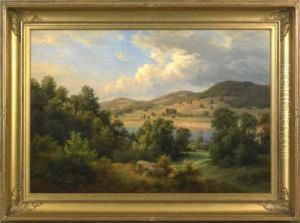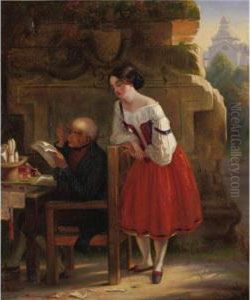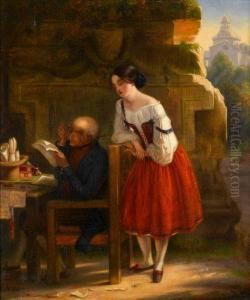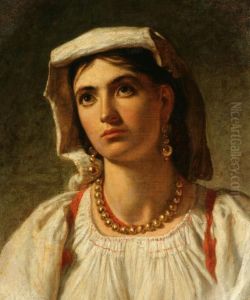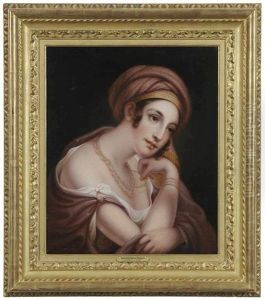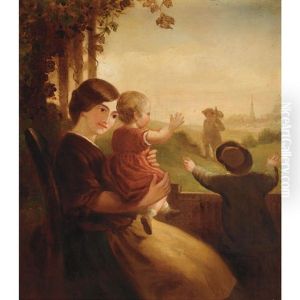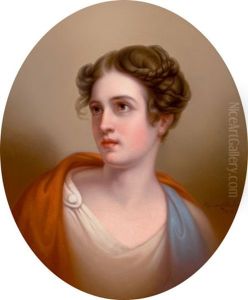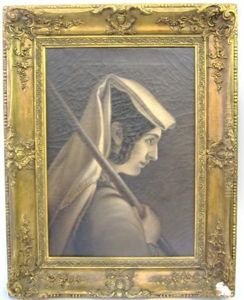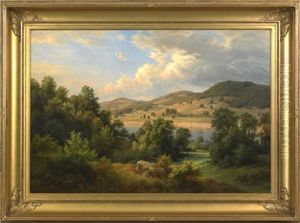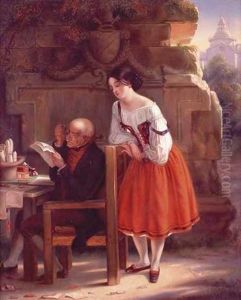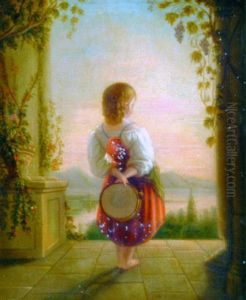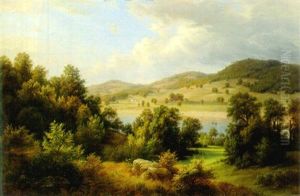Harriet Cany Peale Paintings
Harriet Cany Peale was an American painter born in the early 19th century, a period that saw significant changes in the art world, particularly in America. Born in 1800, Harriet grew up in a society where opportunities for women, especially in the arts, were limited. Despite these challenges, she pursued her passion for painting, becoming known for her still lifes and portraits. She was part of the Peale family, a prominent family of artists in America, which undoubtedly influenced her career and provided her with a supportive environment for developing her artistic skills.
Harriet was married to Rembrandt Peale, another well-respected artist of the time, known for his portraits and historical scenes. This connection further integrated her into the artistic circles of the era, allowing her to develop her talents and gain recognition for her work. Despite living in the shadow of her husband's more widely recognized achievements, Harriet's contributions to American art, particularly in still life, have been appreciated by art historians who recognize the quality and depth of her work.
Throughout her career, Harriet Cany Peale exhibited a keen eye for detail and a remarkable ability to capture the essence of her subjects, whether it was in the delicate rendering of fruit in a still life or the nuanced expression of a sitter in a portrait. Her work is characterized by a refined use of color and light, reflecting the influence of the European masters while also contributing to the development of a distinct American style in painting. Harriet Cany Peale's legacy is not just in the beauty of her paintings but also in her role as a pioneer for women artists in the 19th century, challenging societal norms and paving the way for future generations. She passed away in 1869, leaving behind a body of work that continues to be admired for its craftsmanship and elegance.

